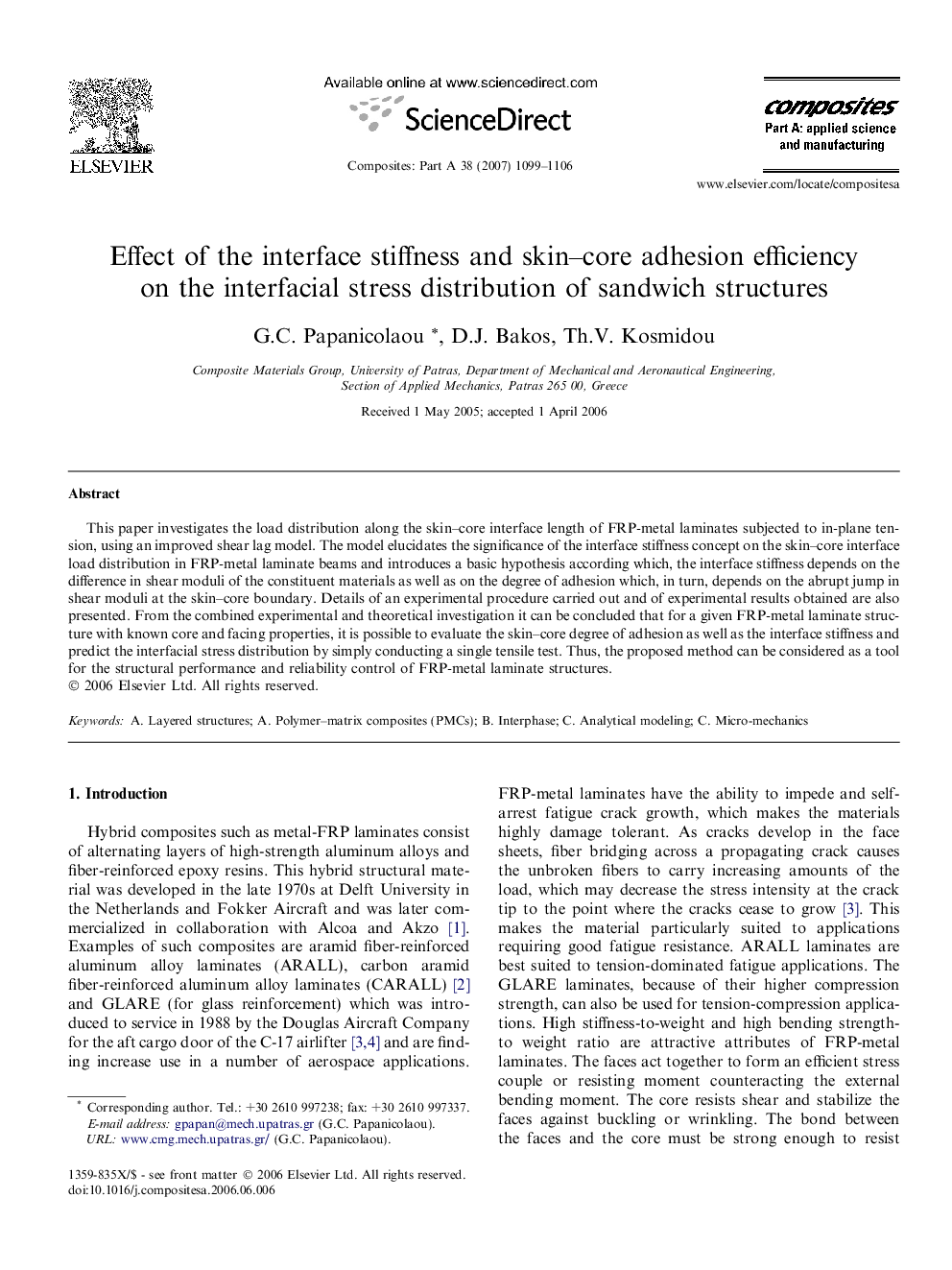| Article ID | Journal | Published Year | Pages | File Type |
|---|---|---|---|---|
| 1467597 | Composites Part A: Applied Science and Manufacturing | 2007 | 8 Pages |
This paper investigates the load distribution along the skin–core interface length of FRP-metal laminates subjected to in-plane tension, using an improved shear lag model. The model elucidates the significance of the interface stiffness concept on the skin–core interface load distribution in FRP-metal laminate beams and introduces a basic hypothesis according which, the interface stiffness depends on the difference in shear moduli of the constituent materials as well as on the degree of adhesion which, in turn, depends on the abrupt jump in shear moduli at the skin–core boundary. Details of an experimental procedure carried out and of experimental results obtained are also presented. From the combined experimental and theoretical investigation it can be concluded that for a given FRP-metal laminate structure with known core and facing properties, it is possible to evaluate the skin–core degree of adhesion as well as the interface stiffness and predict the interfacial stress distribution by simply conducting a single tensile test. Thus, the proposed method can be considered as a tool for the structural performance and reliability control of FRP-metal laminate structures.
